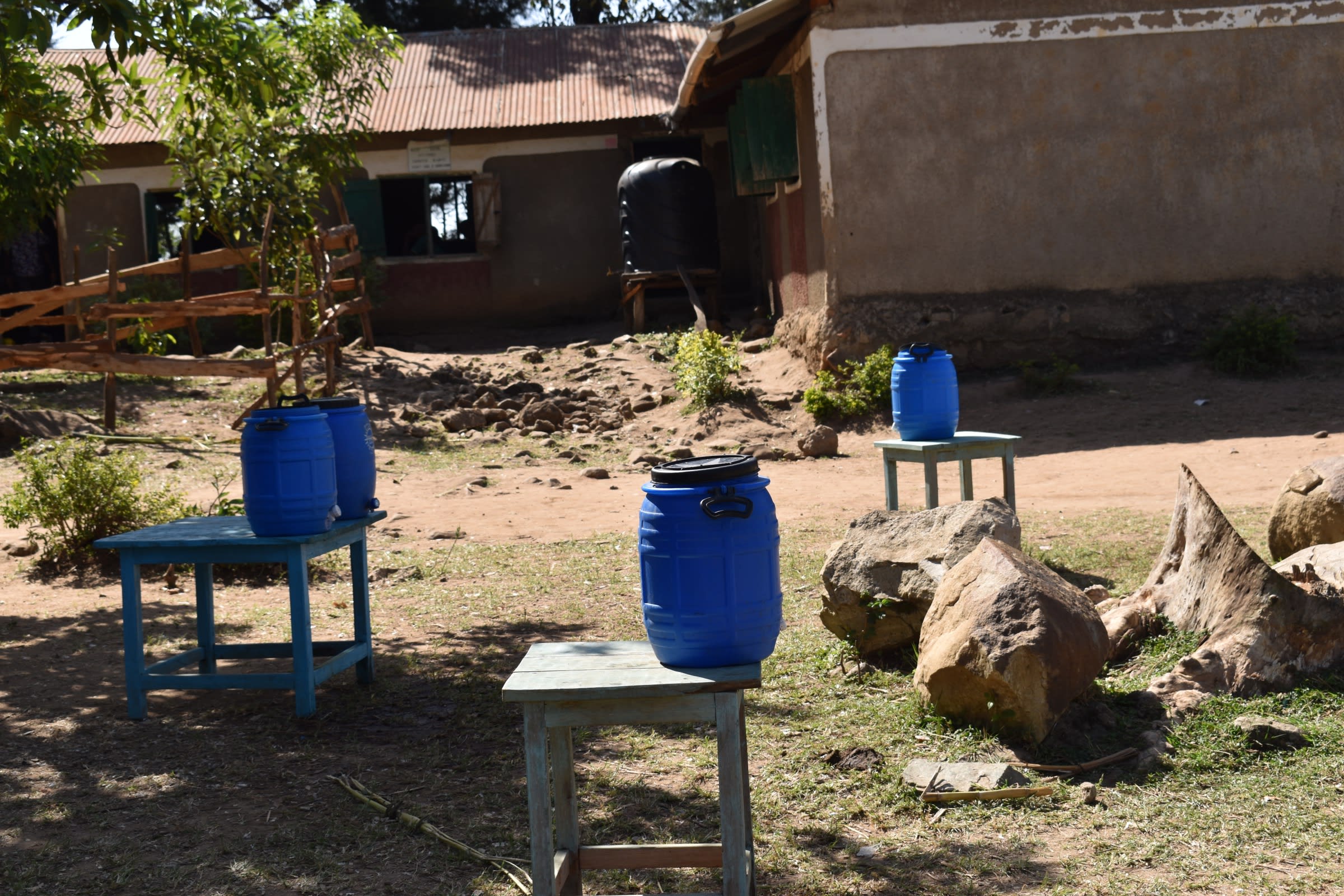Because Bulupi Friends Primary School only has two tiny rain tanks for its large 1,025-student population, the students are forced to bring water from home every day. And even with every student carrying in a jug of water, it's never enough to serve the school's many water needs.
During the rainy season, the small tanks often quickly fill, but they empty almost as fast. In the dry season, the tanks are useless.

The poor quality of the water students carry from home makes them sick. The most commonly reported consequences of drinking the water at the school are typhoid, diarrhea, and stomach problems. This has caused recurring absenteeism among the students.
"Pupils bring water from different water sources, which [I] am not sure of its safety," said Deputy Head Teacher Patmore Mosiki, 38. "So many times, [I] am forced to remain thirsty until [I] am back home. The ability to drink water from school has been so difficult."
13-year-old student James blames his poor performance on the school's water situation, and the fact that he has often been ill. "I have missed most of morning class lessons due to carrying water," he said. "It's difficult. I always get so exhausted, forcing me to doze off the entire class lesson. My parents are worried as my performance is poor."
What We Can Do:
Two Rain Tanks
Two 75,000-liter rainwater catchment tanks will help alleviate the water crisis at this school. The school will help collect the needed construction materials such as sand, bricks, rocks, and water for mixing cement. We will complement their materials by providing an expert team of artisans, tools, hardware, and the guttering system. Once finished, these tanks will begin catching rainfall that will be used by the school's students and staff for drinking, handwashing, cooking, cleaning, and much more.
We and the school strongly believe that all of these components will work together to improve standards at this school, which will lead to better student academic performance and help to unlock the potential for these students to live better, healthier lives.
Handwashing Stations
The student health club will oversee the two new handwashing stations we will provide, and make sure they are kept clean and in working condition. The club leaders will fill the handwashing stations with water daily and make sure they are always supplied with a cleaning agent such as soap or ash.
VIP Latrines
Two triple-door latrine blocks will be constructed with local materials that the school will help gather—one block for girls and one for boys. All of these new latrines will have cement floors that are designed to be easy to use and clean. And with two rain tanks right on school property, there should be enough water to keep them clean.
Training on Health, Hygiene, COVID-19, and More
We will hold a one-day intensive training session with students and teachers. This training will cover a wide range of topics including: COVID-19 symptoms, transmission routes, and prevention; personal and environmental hygiene; and the operation and maintenance of the rain tanks, latrines, and handwashing stations. There will be a special emphasis on handwashing.
Our team of facilitators will use a variety of methods to train, including participatory hygiene and sanitation transformation, and asset-based community development. We will initiate a student health club, which will prepare students to lead other pupils into healthy habits at school and at home. We will also lead lectures, group discussions, and provide illustrative handouts to teach health topics and ways to promote good hygiene practices within the school, like handwashing and water treatment. We will then conduct a series of follow-up trainings before transitioning to our regularly scheduled support visits throughout the year.

 Rainwater Catchment
Rainwater Catchment
 Rehabilitation Project
Rehabilitation Project




































